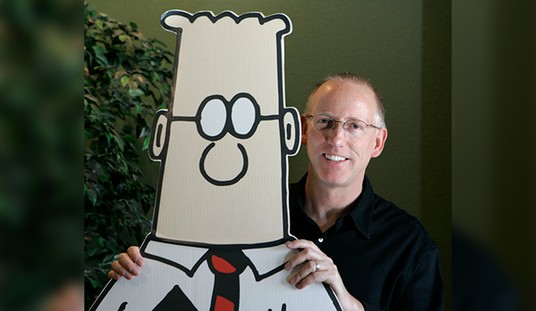I guess this particular story has been circulating for a while but I didn’t see it until it popped up at National Review today. A collection of academics at a university in Canada have partnered together for a project called “decolonizing light” which seeks to bring critical social justice to bear on the discipline of physics.
Canada’s government granted a group of academics almost $164,000 for a research project called “Decolonizing Light: Tracing and countering colonialism in contemporary physics,” a search of grant records confirmed.
Disturbingly, the academics involved admit that they have zero interest in performing science or seeking truth but are instead interested in spreading woke ideology. “The purpose of our project is not to find new or better explanations of light; we are not seeking to improve scientific ‘truth,’” scholars involved in the project wrote in one of their few published works. “Rather, our project initiatives are motivated by the marginalization of women, Black people, and Indigenous peoples particularly in physics.”…
The project is headed by a Dr. Tanja Tajmel, a special adviser to the dean of diversity, equity, and inclusion at Concordia University in Montréal, whose research interests include “investigating ‘othering’ in STEM, exploring decolonizing approaches in STEM, and developing further the meaning and understanding of equity in the STEM fields.” Of the 18 academic investigators listed on the project’s website, only one has a doctorate in astronomy. (Tajmel is trained in “physics didactics.”) Everyone else’s expertise is in unrelated, often identity-focused fields such as “First Peoples’ Studies.”
The paper the group wrote (published in 2021) is full of woke jargon and spells out how adopting their approach would result in focusing on social justice issues rather than actual science. [emphasis added]
This approach requires a critical attitude and the willingness to critically question the scientific field. Frameworks and methodologies for this purpose are, for example, feminist theory [27], critical race theory [28], and Indigenous science and technology studies [29]. As illustrated in Figure 2,5 we regard what has been referred to as the “core of knowledge in physics” [30, p. 113] as an inherent part of the social field of physics, highlighting that physics knowledge is not independent from the actors, their values and the historical context in which it was generated. Let’s elaborate this further for the example of the Planck–Einstein relation E = h · υ describing the energy E of a light quantum, a single wave-particle of light emitted or absorbed; υ is the frequency which determines the color of light, h is the Planck number named after the German physicist Max Planck who lived around 1900 in Berlin. This formula has been found valid and enabled the development of solar panels (absorption) and lasers (emission). Every STEM student is expected to know this relation. In our project, we will not question E = h · υ.6 But we ask: What person was Max Planck? What circumstances enabled him (and others) to discover this relation? How was his work related to colonialism, by whom was he funded? What happened in this time around the world? Why were essentially only white men doing physics research? What knowledge about light was disrupted by colonialism? We consider questions of this kind as part of physics in a holistic sense.
Later on the paper offers an example of how indigenous knowledge could be added back into the classroom.
Another example is Democritus and the atomists. They had the idea that the natural world consists of two different kinds of realities: atoms and void. Atoms are solid with tiny hooks and barbs on their surfaces which enable them to be entangled [33]. Although long since proven to be physically wrong, most physicists would still agree that knowing about the Greek philosophers and their thoughts does not harm physics students and that such knowledge does have its place in academia. Then, why not knowing and teaching about Indigenous Knowledge systems and philosophies? They are spatially much nearer to any Canadian student than the Greek philosophers who are distant both physically and temporally (7000 km and 2400 years away) whereas Canadian universities and schools are built on Indigenous territory.
It has been a while since I took physics but I suspect the discussion of Democritus and the atomists is fairly small part of the curriculum of an actual physics class (as opposed to a history of science or early philosophy class). Yes, the professor or the textbook might mention it when introducing the topic of atoms by way of background but the gist of the lecture is going to be that the atomists had some interesting intuitions but lacked the technical ability to investigate them. And that’s probably all students will get on the topic.
So, would I object to giving indigenous views the same treatment? No, not really. If a professor wants to mention it and devote a few minutes to a similar discourse, i.e. they had some beliefs and intuitions but lacked the ability to investigate them, I’d be fine with that. But I suspect the author of the paper are looking for a lot more investment than that in indigenous knowledge. National Review notes the group has produced a single program on indigenous star stories.
The main presenter, Wilfred Buck, was introduced as, among other things, an astrologer and “the foremost authority on indigenous astronomy in the world.”
Buck told a university audience a tale about a Cree constellation called “Grandmother Spider” that overlaps with the constellation of Cassiopeia (the Greek name by which the International Astronomical Union refers to the constellation). In this origin story, before humans existed, Grandmother Spider helped a “star woman” made of pure energy travel through another constellation, the Hole in the Sky (the Pleiades), to Earth. Learning about native mythology can be valuable, but problems arise when mythology is taught as fact. For example, mention of a horse constellation acted as segue for the speaker to inaccurately claim that indigenous people had and used horses before European contact. Throughout the talk, the presenter stressed the importance of receiving guidance from dreams and visions, instead of experiments or data. He suggested that dreams could help to recover lost pre-colonial indigenous knowledge, and even “sync with another reality” within the multiverse.
Again, I don’t see a problem with teaching this in a local history course but it’s not physics.








Join the conversation as a VIP Member